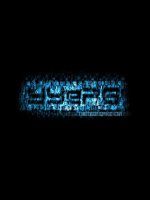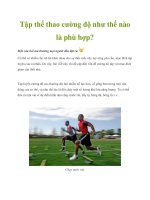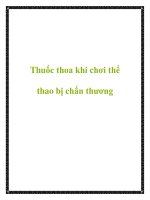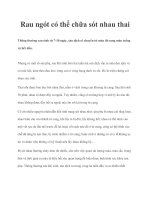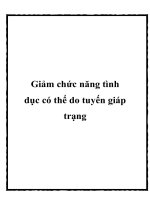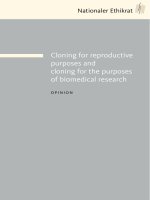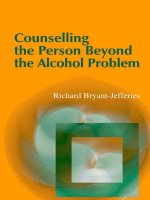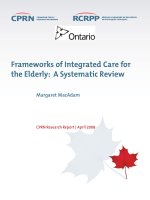The Contest Problem Book V potx
Bạn đang xem bản rút gọn của tài liệu. Xem và tải ngay bản đầy đủ của tài liệu tại đây (7.42 MB, 307 trang )
The Contest
Problem
Book
V
American High School Mathematics Examinations
and
American Invitational Mathematics Examinations
198S1988
Problems and solutions compiled and augmented by
George Berzsenyi
Rose-Hulman Institute
of
Technology
Stephen
B
Maurer
Swarthmore
College
THE
MATHEMATICAL
ASSOCIATION
OF
AMERICA
NEW MATHEMATICAL LIBRARY
published by
The Mathematical Association of America
Editorial Committee
Underwood Dudley, Editor
DePauw University
Ross Honsberger, University of Waterloo
Daniel Kennedy, Baylor School
Michael J. McAsey, Bradley University
Mark E. Saul, Bronxville Schools
Peter Ungar
Anneli Lax, Consulting Editor
New York University
The New Mathematical Library (NML) was begun in 1961 by the School
Mathematics Study Group to make available to high school students
short expository books on various topics not usually covered in the high
school syllabus. In three decades the NML has matured into a steadily
growing series of over thirty titles of interest not only to the originally
intended audience, but to college students and teachers at all levels. Pre-
viously published by Random House and L. W. Singer, the NML became
a publication series of the Mathematical Association of America (MAA)
in 1975. Under the auspices of the MAA the NML will continue to grow
and will remain dedicated to its original and expanded purposes.
© 1997 by the Mathematical Association of America
Library of Congress Catalog Number 97-70508
Print ISBN 978-0-88385-640-6
Electronic ISBN 978-0-88385-952-0
Printed in the United States of America
The Contest
Problem
Book
V
American High School Mathematics Examinations
and
American Invitational Mathematics Examinations
1983-1988
1.
2.
3.
4.
5.
6.
7.
8.
9.
10.
NEW MATHEMATICAL
LIBRARY
Numbers:
Rational
and
Irrational
by
Ivan
Niven
What is Calculus About?
by
W
W
Sawyer
An
Introduction
to
Inequalities
by
E.
R
Beckenbach
and
R. Bellman
Geometric Inequalities
by
N.
D.
Kazatimff
The
Contest
Roblem
Book
I
Anad
High
School
Mlthanotics
Examinations
1950-1960.
Compiled
and
with
sohtions
by
Charles
L
Salkind
The
Lon
of
Large
Numbers
by
PI
J.
Davis
Uses
of
Inhity
by
Leo
Zippin
Gmmctric
Transfonnations
1
by
I.
M.
Yaglom, translated
by
A.
Shieldr
Continued
Fractions
by
corl
D.
OIdp
Replaced
by
Nh4L 34
11.
}
Hungarian
probian
Books
I
and
Il,
Based
on
the
=tv&
Competitions
12.
1894-1905
and
1906-1928.
tmnslatedby
E.
Ramport
13.
14.
15.
16.
17.
18.
19.
20.
21.
22.
23.
24.
25.
26.
27.
28.
29.
30.
31.
32.
33.
34.
35.
36.
37.
38.
Episodes
from
the
Early
Histury
of
kth&cs
by
A.
Aaboe
Chup
and
Their
Graphs
by
E.
Gtussinan
and
W:
Magnus
The
Mathematics
of
Choice
by
Ivan
Niwn
Fm
Pythagoras
to
Einstein
by
K
0.
Friedrich
The
Conteat
Roblem
Book
I1
Ann4
High
School
Mathematics
Examinations
1%1-1%5.
Cornpiled
and
with
solutions
by
Charla
L
Sa&d
First
Coacepts
of
Topology
by
W:
G.
Chinn and
N.
E.
Steenrod
Geomerry
Revisited
by
H.
S.
M,
Coxefer
and
S.
L.
Gmiiser
Invitation
to
Numbcr
Theory
by
@stein
Om
Cmmctric
Transfonnatiioos
Il
by
I.
M.
Yaglom, translated
by
A.
Shieldr
Elc~ncnta~y Cryptanalysis-A
Mathumb
'cal
Approach
by
A.
Sinkw
Ingenuity
in
Mathematics
by
Ross Honsbetger
Geometric
Transfrmnations
III
by
I.
M.
hglom. translated
by
A.
Sheniaer
The
Conkst
Roblem
Bodr
IIl
Annd
High
School
Muhcmuics
Exlmirutions
1-1972.
Compiled
and
with
solutions
by
C.
L
Salkind
and
J.
M.
&I
Mathematical
Methods
in
Science
by
Geotge
Pdlya
Intcmational
Mathematical
Olympiade1959-1977.
Compiled
and
with
solutions
by
S.
L.
Gmiaer
The
Mathematics
of
Games
and
Gambling
by
Edwanj
IK
Packel
'
'ons
1973-1982.
The
Contad
Roblem
Bodr
lV
Anad
High
School
'cs
EurmoM
Compiled
and
with
solutions
by
R
A.
Arfino,
A.
M.
Gaglione,
and
N.
Shell
The
Role
of
Mathematics
in
Scieacc
by
M.
M.
Schiffer
and
L.
Bowden
Intanatid
Mathematical
Olympiads
1978-1985
and
forty
supplemntary
problems.
Compiled
and
with
solutions
by
Murray
S.
Klamkin
Riddles
of
the
Sphinx
by
Mcvrin
Gadner
U.S.A.
Math-tical
Olympiads
1972-1986.
Compiled
and
with
solutions
by
Murray
S.
Klamkin
Graphs
and
Their
Uses
by
@stein
Om.
Rcvised
and
updated
by Robin
J.
Wilson
Exploring
Mathematics
with
Your
Gnnputcr
by
Arthur Engel
Game
Theory
and
Strategy
by
Philip
D.
SfrgBn,
JI:
Episodes
in
Ninetemth
and
lbenthicth
Cenhuy
Euclidean
Geometry
by
Ross
Honsbetger
The
Contest
Roblcm
Book
V
Amrican
High
School
Mathematics
Examinations
sad
American
Invitational
hbtbanatics
Euminrtions
1983-1988.
compiled
and
augmented
by
George
Bemenyi
and
Stephen
B.
Maumr
Ofher
titles
in
pmpmtion.
Contents
Preface
vii
ASHME
1
Problems
1
1983AHSME
1
1984AHSME
7
1985 AHSME
13
1986AHSME
19
1987
AHSME
26
1988 AHSME
33
Dropped
AHSME
Problems
40
AnswerKey
51
Response F’requency Tables
52
Solutions
:
59
1983 AHSME
Solutions
59
1984 AHSME
Solutions
73
1985
AHSME
Solutions
85
1986 AHSME
Solutions
100
1987 AHSME
Solutions
113
1988 AHSME
Solutions
128
Solutions
to
Dropped
AHSME
Problems
139
AIME
157
Problems
157
1983AIME
157
1984AIME
160
1985AIME
163
1986AIME
166
1987AIME
169
1988AIME
172
Dropped
AIME
Problems
175
AnswerKey
178
Solutions
179
1983 AIME
Solutions
179
1984 AIME
Solutions
192
V
1985
AIME
Solutions
204
1986
AIME
Solutions
216
1987
AIME
Solutions
230
1988
AIME
Solutions
240
Solutions to Dropped
AIME
Problems
250
A
Guide
to
the Problem Literature
261
Classification
of
Problems
277
vi
Preface
This is the fifth book of problems from the American High
School Mathematics Examination (AHSME), covering the
six
examinations from
1983-88.
It is
also
the first book of prob-
lems for the follow-up American Invitational Mathematics Ex-
amination (AIME), which began in
1983.
These are two
of
the four examinations in the American Mathematics Competi-
tions (AMC); the others are the USA Mathematical Olympiad
(USAMO) and the American Junior High School Mathematics
Examination (AJHSME).
Each
AHSME consists of
30
multiplechoice questions, and each
AIME consists of
15
questions, with each answer an integer from
0
to
999.
Both examinations cover precalculus material. Contestants
have
90
minutes for the AHSME,
3
hours for the AIME
(2.5
hours
in
1983-85).
During
the period covered by this book, about
400,OOO
students took the AHSME each Spring and
1000-4000
were invited to the AIME (based on AHSME score).
On
both
exams, problems are roughly in increasing order
of
difficulty, with
the AIME questions,
on
average, much harder. The AHSME
is
one of the largest mathematics competitions in the world, and all
the AMC
exams
are
known
and respected worldwide.
Why Buy
this
Book?
The immediate reason
is
to
practice
in
order
to
do better
on
future offerings of these competitions. And there is
no
doubt that
practice helps. The AHSME
is
a
hard exam: typically the best
score in
a
school will be less than
100
points out of
150
possible,
so
there
is
plenty of room for improvement.
However, the fundamental goal
of
the mathematics community
in providing these exams
is
to pique interest in mathematics and
develop talent. Problems are
at
the heart of mathematics, and
experience greatly sharpens problem-solving
skills.
We believe that
some
of
the problems
on
the AHSME and AIME are intriguing
in themselves, and/or they bring out important mathematical
points. Thus, one doesn’t ever have to participate in the AHSME
or AIME contests to
gain
something from this book
-
older readers
aren’t eligible anyway! Indeed, working these problems from this
book you need not stick to the artificial time limits that contests
impose. Often the best solutions, and the deepest learning, come
when there
is
time to reflect.
vii
viii
CONTEST
PROBLEM
BOOK
V
While supplies last (many years), each exam and its solu-
tion pamphlet are available individually. This book offers the
convenience and lower cost of bundling
-
and much more:
1.
Additional solutions. Although most solutions in this book are
the same
as
provided in the complete solution manual made
available right after
each
exam
is
given, there have been some
editorial improvements in them and some additional solutions
have been added. Some of these additional solutions weren't
in
the solution pamphlets due to space
limits,
some are solutions
mailed to
us
by students and teachers, and some were provided
by members of the MAA Publications committee when they
reviewed our manuscript.
2.
An index. If
a
reader wishes to work
on
specific
types
of
problems, this index makes it possible.
3.
Pointers to other material. We have added some further
references to related problems and to articles and books that
expand upon ideas in some of the problems.
4.
"Dropped Problems".
In
order to get good
exams,
one must
begin with many more problems than will
fit.
Invariably, some
very good problems don't make the final cut. We provide two
sets of dropped problems (heretofore never revealed!), one for
the AHSME and one for the AIME.
The AHSME is
a
multiple-choice
exam. We provide frequency-response tables that show how
popular each answer
was
for
each
question. The introduction
to that section explains how one can
use
these tables to
calibrate one's work and identify important mathematical
errors.
5.
Statistical information.
How
to
Use
This
Book
You
can
learn from this book through both the problems you
get right and the problems you get wrong. After doing
a
problem
(or
a
set of problems
-
but you don't need to stick to the time
limits), first look
at
the answer key. If you got the right answer,
then look
at
our
solution(s) to compare with yours. If you are
fortunate, our solution will be very different from yours and
will thus introduce you to an alternative approach.
If
you got
the wrong
answer,
go back to the problem before looking at the
solution. Just knowing that your answer
was
wrong
(or
sometimes
knowing the right answer) will jog you into seeing your error and
PREFACE
ix
lead you to a correct solution.
If
not, then
look
at the solution.
Ask yourself: What is the key idea in this solution that I missed
(or misunderstood)?
Another good thing to do with any problem is to change the
hypotheses and
see
how the conclusions change. More generally,
see if you can use ideas from this book to make up and solve new
problems
at
the right challenge level for you and your friends.
Problem
posing
can be
as
good
a
learning experience
as
problem
solving.
We hope this book will be
used
not just by individuals, but
also
by math clubs or groups of students working together in
class
or elsewhere. Sharing ideas
-
from initial false
starts
through
to
a
joint solution
-
is
sometimes the most exciting way to do
mathematics.
Do
not
be
diswumged
if
there are many
problems
you
cannot
solve.
These are hard
exams
and are meant to challenge almost
everybody. Keep in mind that during
1983-88
at
most
a
few
thousand students obtained an Honor
Roll
score on the AHSME
(100
out of
150).
The fewest Honor
Roll
students was
624
in
1984,
the most
8050
in
1988.
Also, during these
6
years only
7
students obtained
a
perfect AHSME score of
150.
The AIME
is
even more difficult. On average, the extremely able students who
took it scored about
5
out
of
15,
and only
11
students obtained
a
perfect
15
during these
years.
If you find, for instance, that
the last
10
problems on the
1983
AHSME are beyond you, then
on later
AHSMEs
concentrate on problems just before and after
this cutoff point. Stretching yourself just beyond what you can
do easily brings about the best growth.
In particular, younger students especially should not be con-
cerned that they cannot do all the problems. They haven't even
studied some of the topics covered yet.
If a
problem treats
a
topic
you don't know, just skip it.
History
and
Changes
The AHSME was first given in
1950,
under the name Annual
High School Contest; it was then sponsored by the New York
Metropolitan Section of the Mathematical Association of America
(MAA) and was offered in that region only. In
1957
it became
a
national competition, cosponsored by the MAA and the Society
of Actuaries. By
1982
it was sponsored by five organizations: The
MAA, the Society of Actuaries, Mu Alpha Theta, the National
X
CONTEST PROBLEM
BOOK
V
Council of Teachers of Mathematics, and the Casualty Actuarial
Society. Also, it
was
given to
over
400,000
students in American
and Canadian
schools
in North America and elsewhere, and
translations were
in
use
by many other foreign
schools.
During
1983-88
there were
a
number of specific changes and
some gradual evolutions.
NamW
Unfortunately, the AHSME had been
known
by
a
number of
names
over
the years,
all
in
use
simultaneously, none of them fully
descriptive, and none of them short.
So
in
1983
"American High
School Mathematics Examination" and the
acronym
AHSME were
introduced, with emphasis
on
the latter.
This
acronym
seems
to
have caught
on.
For simiiar reasons, and because
a
middle-school examination
was
now
involved, the examination program
as
a
whole became
the American Mathematics Competitions (AMC).
More
sponsors
Because
of
growing concern about the quality of precollege
mathematics education, many organizations that had not been
directly involved
at
this level decided
that
it
was
important to
become involved.
As
one
part
of
this
change, the AMC received
two new sponsors: The American Statistical Association in
1985,
The American Mathematical hiation of Two-Year Colleges
in
1986.
Since
1988,
further sponsors have come
on
board: The
American Mathematical Society in
1989,
and the American Society
of Pension Actuaries
in
1995.
More
exams
The AWE commenced in
1983.
A later section presents the
reasons
for introducing the AIME.
A
junior-high exam, modeled
after the AHSME, commenced
in
December,
1985:
The AJHSME
(American Junior High School Mathematics Examination).
AHSME
scoring
system
The scoring method changed once during this period. Fkom
1978
to
1985
the formula
was
30+4R-W,
where
R
is the number
of correct
answers
and
W
is
the number wrong. Fkom
1986
on
the formula has
been
5R
+
28,
where
B
is
the number you
don't
answer
(leave blank). There are
30
questions,
so
note that the
PREFACE
xi
top score is
150
either way. To learn the reasons for this change,
see
the section “AHSME Scoring” below.
AHSME
difficulty level
For many years there had been
a
debate within the AMC
about making the AHSME easier. On the one hand it was the
capstone challenge mathematics examination for North American
high school students, harder than various state and local exams
and with
a
long tradition. On the other hand, efforts to keep many
students and their teachers from getting discouraged, by having
them set realistic goals, were not succeeding. The introduction of
the AIME provided
a
context in which
a
consensus was reached
to make the AHSME easier.
Progress
was
made on this goal during
1983-88.
The number
of Honor Roll students in these years was, by year,
1823, 624,
931, 2848, 4221,
and
8050.
However, setting the difficulty level of
a
competitive exam
in
advance
is
not
so
easy, and even judging
the difficulty after the fact is not clear-cut.
As
for after-the-fact
judgments,
a
different set of students takes the exam each
year,
so
even if the average score was the same in two consecutive years,
that suggests only that the exams were equally hard. Furthermore,
the scoring changed in
1986,
and the change in Honor Roll cutoff
may not have compensated exactly.
As
for
beforethefact judgments, the AMC exams are not
standardized tests, lie the SATs. The College Board
uses
some
problems
over
again
(so
called “equators”), which allows them
to
figure out how to set scores
so
they have the same meaning each
year. They can have equators because not
all
of their tests are
made public; sometimes all the test problems are collected and
not published later. However, the AMC immediately makes all
its problems and solutions publicly available
-
our
main goal is to
promote mathematical learning. While we (meaning all the AMC
test writers) try to judge the difficulty of
our
tests
in advance,
by averaging our opinions, this is merely a rough guide and our
judgments are often off.
Changes
in
coverage
Over time the style and emphases in mathematical problems
change. When the AHSME started,
it
consisted almost exclusively
of classical geometry and algebraic manipulation. (Indeed,
it
seems
that trigonometry did not appear explicitly until
1972,
although
alternative solutions to some earlier problems used trigonometry.)
xii CONTEST
PROBLEM
BOOK
V
By
1982
AHSME coverage had become much broader. The main
changes during
1983-88
were the following.
Addition
of
statistics.
Probability and statistics are now recog-
nized
as
important topics for citizens to learn about through their
secondary mathematics courses. For
this
reason, and because the
American Statistical Association became
a
sponsor, occasional
problems
on
statistical concepts were included, e.g., averages,
modes, best
fit.
Also, more problems about probability appeared.
Algorithms.
Calculators, computers, and methods of computation
have become more important,
so
AMC exams have paid more
attention
to
related mathematics. For instance, there were more
problems about recurrences (sequences where each term
is
defined
by
using
earlier terms) and problems about the end result
of
repeated calculations.
Applications.
We wanted to stress applications more. But there
is
a
difficulty. Any realistic application
is
complicated
to
describe,
and
at
least half the battle
is
coming up with (and justifying)
a
reasonable model. This makes it
very
difficult to write an
applications problem that
is
simple and clear enough for the
AHSME or AIME. The leadiig applied math contest, the COMAP
Modeling Contest,
is
a
group contest where students
have
a
whole
weekend and must write an essay in which, among other things,
they can explain and justify their interpretation of the problem.
Computation.
More generally, there has been
a
trend
in
math-
ematics education to downplay mechanical computation and em-
phasize concepts. The AMC exams involve much less computation
now
than in the early years, when students had only
80
minutes
for
50
questions
-
speed and precision were
at
a
premium then!
Throughout
1983-88
the AHSME had
90
minutes for
30
questions,
and for the AIME there was much more time per problem (which
increased when the total time was extended from
2.5
hours to
3
hours). However, there are deliberately still
a
few problems
where, say, algebraic prowess
is
still needed.
Allowed Aids.
What
is
interesting here
is
that nothing changed.
Computers, calculators and slide rules remained forbidden, graph
paper, rulers, compasses, protractors were allowed. There
was
some discussion about permitting calculators, but they were first
allowed much later
-
1994
-
and only
on
the AHSME, not the
AIME. There are
a
few problems in
this
book where
a
hand
calculator makes the problem much easier; such problems could
PREFACE
xiii
not be
used
on
the AHSME today.
Distractor
change
“Distractor” is test-maker language for wrong answer. The
use
of
this word suggests that the answers are there to “trick” you.
During the period covered by this volume the AMC
test
writers
decided to limit the ways
in
which distractors could be tricky.
Suppose you are asked to find the diameter
of
a
sphere meeting
some condition. Suppose further that you do
a
lot of good thinking
and hard work to prove that the radius
is
10.
Now suppose that
the answers include both
10
and
20.
The problem asked
for
the size in terms
of
the diameter, but you figured it out (quite
reasonably)
in
terms of the radius.
If,
after all your work, you
make the small slip of forgetting to convert, you get the problem
Wrong.
Now suppose you are asked for the percentage change if
a
price
increases by
20%
and then by
20%
again. Suppose both
40
and
44
are among the answers. You reason that percents add and
choose
40.
In
both
cases
you have
been
distracted by
a
distractor, but the
situations are very different. In the first case you were mostly
right. In the second you were using
a
completely wrong approach.
In earlier years the AHSME had many distractors of both
types.
During
1983-88,
due to strong
feelings
by many members of the
AHSME
Committee, most distractors
of
the fitst
type
(answers
you might get
if
you did the problem mostly right and made just
one small error) were eliminated. Distractors of the second type
were not. Indeed they were encouraged
-
distractors were rarely
chosen
at
random.
But what constitutes
a
small error?
If
you forget that
fi
must be nonnegative,
is
that small, or have you neglected
an
important principle? These are matters the AHSME Committee
argued about!
AHSME
Scoring
The scoring change
in
1986
(from
“30
+
4
*
Right
-
Wrong”
to
“5
*
Right
+
2
*
Blank’’)
was
prompted primarily because of
a
concern about guessing. The data available to
us
indicated that
on
many questions even very
good
students were guessing wildly,
i.e., randomly, or even badly, that
is,
with fewer right answers
XiV
CONTEST
PROBLEM
BOOK
V
than if they had guessed at random. Indeed,
as
a
contest
strategy,
random guessing
was
quite reasonable. Under the old scoring,
random guessing would,
on
average, not change your score, and
guessing after eliminating even one answer would,
on
average,
increase your score. Furthermore, because the
AHSME
is hard,
there
was
little embarrassment if guessing caused your score to
go down, and much “fame” if by chance it made your score go
way up.
So
why not go for broke?
Unfortunately, this contest strategy conflicts with the edu-
cational purpose, which for the student involves making one’s
strongest intellectual effort (including
educated
guessing) and for
us
involves accurate identification of the students with the greatest
talent.
So
we began by changing the instructions, urging students not
to guess randomly. But this had little effect. The change in
scoring
was
a
more substantial change. First of
all,
it meant that
random guessing would,
on
average, lower your score. Indeed,
you have to eliminate three choices
befom
a
guess between the
remaining two
can
be expected to raise your score (and the new
instructions said this). Second, by awarding points for leaving
a
blank, instead of taking away points for
a
wrong answer,
we
hoped the new
rules
would interact with human psychology to
discourage wild guessing.
There were some secondary arguments in favor of the change.
For instance, even if students did not change their strategy, scores
would
rise.
(That is, it
is
a
little theorem that the same answers
lead to an equal or higher score under the new
rules).
This
allowed
us
to
set
the
AIME
cutoff
at
100
(which
sounds
good,
and matched our honor roll cutoff) instead of
95.
Second, most
scores would now be in the range
60-100,
the typical range for
scores
on
classroom tests. (Under much earlier scoring systems,
it was not uncommon to get negative scores!)
There were some objections to the new rules. Some teachers
felt we were rewarding passivity. (We felt we were rewarding good
judgment about when to guess, and self-awareness about when
you don’t know what you are doing
-
how often do teachers
see
nonsense
on
student papers and wonder how the student failed
to notice that it
was
nonsense?)
But after the
fust
year all went
smoothly.
We don’t claim this is the ideal scoring system for
a
multiple
choice test. Indeed, there are some studies that suggest the best
PREFACE
xv
system for such tests (i.e., the way to get the most accurate
measure of knowledge)
is
to allow students to select more than
one
answer, say, by crossing out just those answers they are sure
are wrong. See “Scoring in Multiplechoice Examinations, by
G.
H.
Pollard,
Math.
Scaentist
10
(1985),
pp.
93-97.
The
AIME
The AIME was introduced for two reasons.
First,
by introducing
an exam intermediate in difficulty between AHSME and USAMO,
we could make the AHSME somewhat easier. Second, we hoped
the AIME would help
us
better identify the best students to
participate in the USAMO, which
in
turn
is
used
to select the
American team for the International Mathematical Olympiad
(IMO), the most prestigious and difficult secondary mathematical
competition in the world. The USAMO
is
a
&question, %hour
proof exam. Over the years there seemed to be only
a
weak
correlation between AHSME and USAMO
scores.
This
is
not
surprising. First, it is hard for any exam (in this case the
AHSME) to do fine discrimination over
a
narrow part of its range
(in this case the very top). Second, the formats
of
the two exams
are completely different. Speed and shrewd intuition pay
off
on
the AHSME (and they are valuable talents), but they are not
what the USAMO
is
about. Conversely, a student who
is
slower
but has
a
fine
sense
of logic could do well
on
the USAMO but
might
never
make
it
through the
AHSME
filter.
So
the AMC members asked themselves:
is
it possible to devise
an exam that
1.
is relatively easy to grade,
so
that
a
few thousand students
2.
has problems more like Olympiad problems?
could take it but it could still be graded promptly; and
After much deliberation, we decided the answer was
Yes.
We
couldn’t ask students to provide proofs and still grade
a
few
thousand papers. But we could make problems harder and give
much more time (twice
as
much time for half
as
many problems),
and we could eliminate guessing
as
a
factor by requiring the exact
answer.
The answer
-
that was the most difficult issue! How could
we ask students to give the exact answer and still grade several
thousand papers promptly?
xvi
CONTEST
PROBLEM
BOOK
V
Our
first idea was simply to leave
a
blank in which the student
would write the answer. But this would not allow for machine
grading.
Worse,
students might write correct answers in forms
not easily recognized
as
correct. Suppose we were looking for the
answer
4
sin-’
6
and
a
student writes sin-’(y)
-
Q
?
Is
that
right?
Our
next idea was, for each problem, to state
a
required form
for the answer. For instance, if
our
answer was
2+
4,
then
we might say: “Give integers
a,
b
and
c
so
that the answer
is
a
+
b&.
But we decided such instructions might
give
away too
much information about the problem, and still would require hand
grading.
So
finally we decided that all answers would have to be integers
from
0
to
999.
Such answers could easily be encoded for machine
scoring. Furthermore, guessing would be hard, even though this
format
was,
strictly speaking, multiple choice.
The hard question, and the reason we demurred from
this
approach
at
first,
was:
could we still write
a
full range of
questions given
this
constraint
on
the answers? It would be easy
to write counting problems, and number theory problems, but
what about algebra, geometry, trigonometry? Moreover, there
was
no
point in
allowing
answers.up
to
999
if
we were not going
to
use
them. Would it be possible to make large, random-looking
numbers show up
as
answers without making students do ugly,
complicated arithmetic? Could we avoid having the mere
fact
that
the
answer
is
an integer be
a
clue?
You must judge whether
we
succeeded. The AIME Committee
tried its hand
at
writing problems with the
0-999
constraint, and
we felt
we
succeeded. As you work through the AIME problems,
you
will
see
some of the techniques we
used
to create integer
answers.
AHSMEAIME
Pairs
A good problem often suggests another similar one, sometimes
harder, sometimes easier. This led
us
to wonder if we couldn’t
make pairs
of
problems that would appear, respectively
on
the
AHSME and AIME, or even triples of problems to appear
on
AHSME, AIME and USAMO. If such linked problems appeared
regularly, that would be an incentive, once the AHSME
was
over,
for participants who were going
on
to the AIME to review the
PREFACE
xvii
AHSME very carefully and try to prepare for generalizations of
AHSME problems.
It
proved too difficult to produce such linked problems on a
regular basis.
Or
rather, they were produced, but it was rare that
both the AHSME Committee and the AIME Committee were
equally enthusiastic about their halves of the pair.
So
no formal
commitment was ever made to including pairs. Nonetheless,
several did appear,
as
readers will see
if
they work through both
sets of exams carefully.
Test Development
Readers might be curious to know how these tests are written,
and older readers might be interested in getting involved.
The procedures settled upon during this period for developing
the AHSME and AIME are much the same. About two years
before an exam is to be given, the exam committee Chair calls for
problems from the AMC panelists and exam committee members.
(Panelists
participate by mail only and are usually “trying out”
for fuller involvement; committee members, say on the AHSME
Subcommittee,
also
attend meetings where problems are finetuned
and any policy issues concerning the exam, say the difficulty level
or
the scoring system, are discussed. Henceforth, panelists and
subcommittee members will be called reviewers.)
Each
problem
must be submitted in the appropriate format (e.g., multiple choice
for
the AHSME) along with
a
careful solution.
The Chair then makes
a
packet of all the contributions (some
times after initial editing) and distributes
it
to the reviewers
for
evaluation. The Chair then collects the evaluations and
uses
them
to produce
a
first
draft.
To
make
a
good first draft often requires
substantial editing and careful selection, including selection
of
a
few extra problems in case some problems are later found to be
unsuitable. In making the
first
draft, the Chair generally picks
the best-liked problems, but he/she must
also
see to it that there
is a progression from easy to very hard and that
a
number of
different mathematical topics are covered. Sometimes the Chair
must create another problem
or
two to fill gaps.
This first draft is sent to reviewers, who make written com-
ments. On this basis, the Chair proposes various changes, and
a subcommittee meeting takes place in which these and other
changes are discussed. On this basis
a
second draft
is
developed
and the process of review and meeting is repeated. Usually at this
xviii CONTEST
PROBLEM
BOOK
V
point the exam
is
ready to go to press, but occasionally
a
difficulty
surfaces after this point and further changes have to be made.
After
a
final proofreading review by one or two people associated
with the AMC, but who have not previously been involved with
producing this exam, the exam goes to press.
All along,
a
great deal
of
attention
is
paid to accuracy and
clarity, since students taking these competitions do not get to
ask questions about what the problems mean. As much attention
is
paid to the accuracy and clarity of the solutions
as
to the
problems themselves.
Educators interested in participating in writing AMC exami-
nations should contact the AMC Chair, currently Prof. Richard
Gibbs,
Fort
Lewis College, Durango CO
81301.
The AMC
is
especially interested in involving secondary-school teachers in this
work. The best problems
-
fresh, intriguing, instructive, with
multiple solution methods
-
are rare and cherished gems. Prob-
lem posing, like problem solving,
is
a
special talent. But we are
sure there are many wonderful problem posers out there, and the
AMC would like to know you.
Thanks
to
All
We are the compilers
of
this book because the
first
of
us
was
Chair of the AIME subcommittee during most of the period when
these exams were produced and the second of
us
was the Chair of
the AHSME subcommittee and of the AMC
as
a
whole during that
time. As explained earlier
(test
development), we had primary
responsibility for putting the
tests
together, but we had lots of
help. Only
a
small fraction of the problems and solutions
in
this
book were created by one of
us,
and every problem and solution
here benefited from the intense scrutiny of many people.
So
to
all
members of the AMC panel and committees during the time these
exams were devised (approximately
60
people, some of whom have
passed away) we give heartfelt thanks.
Editorial assistance, and encouragement, were provided by the
Editorial Board of the New Mathematical Library series
of
the
MAA, especially its current Chair, Underwood Dudley, its former
Chairs,
Paul
Zorn and Ivan Niven, and its unnamed reviewers.
Other
sorts
of help were needed to put everything in book form.
Here we would especially lie to thank Mrs. Mary Lou McCul-
lough, for her technical typing of much of the AIME materials
and Professor Darrell
J.
Horwath of John Carroll University for
PREFACE
xix
his preparation of most of the figures accompanying the AIME
problems and solutions. Once we finally got
a
manuscript to MAA
headquarters, it was handled very promptly by the publication
st&
there, in particular, Donald Albers, Elaine Pedreira, and
Beverly Ruedi.
Finally, special thanks go to Prof. Walter Mientka of the
University of Nebraska
at
Lincoln, who was and
is
the Executive
Director of the AMC. He
is
in charge of everything other than
creating the
exams
(e.g., getting
schools
registered, getting exams
printed and distributed, collecting score information, disseminating
score information, publicizing the exams to the world, selling back
material, managing finances.
.
.
).
Both
of
us
found him immensely
dedicated, and
a
pleasure to work with and know.
Closing Thoughts
It has been very gratifying to play
a
role in the AMC because
of
all
the good it does to promote mathematics and mathematical
talent. But our attachment goes deeper because of our personal
histories.
The
first
of
us
says:
Being
a
native of Hungary, I grew up
on
a
rich diet of wonderful competitions and other problem-solving
activities in the early
19509.
Therefore, following my emigration
to the United States and the completion of my studies, it was
natural
for
me
to
follow
the tradition
of
Hungarian
mathematicians
and search for opportunities to make my
own
contributions to
the competition scene. I was first invited to join the USAMO
Subcommittee in
1976,
became
a
member
of
the AHSME Panel in
the same year, and assumed the chair
of
the AIME Subcommittee
in
1982,
following the untimely death
of
Professor
John
H. Staib
of Drexel University.
The second of
us
says: Growing up in the United States, the
AHSME
was
indeed the most special mathematical event of the
year while I was in high school in the early
1960s.
It was
a
joy,
a
challenge, and
a
focus of mathematical excitement. It surely
had something to do with my becoming
a
mathematician. The
AHSME continued to be
all
these things when
I
was
a high school
teacher in the early
709
and could offer it (and once the USAMO)
to my good students. And
so
it was
a
great honor for me, and
a
great sense
of
coming full circle, when
I
was
asked
to join the
Contest Committee in
1978.
xx
CONTEST
PROBLEM
BOOK
V
In editing this volume, we are motivated by the hope that for
some of you younger readers, these problems will be
a
similar
source
of
joy and excitement. May you become mathematicians
too, and take pleasure
from
problems like these all your life.
George Bewsenyi
Stephen Maurer
1983
AHSME
X
X
1.
If
x#O,
-
=g2
and
-
=4y,
then
x
equals
(A)
8
(B)
16
(C)
32
(D)
64
(E)
128
2
4
2.
Point
P
is
outside circle
C
on the plane. At most how many
points on
C
are 3cm from
P?
3.
Three primes,
p,
q
and
T,
satisfy
p
+
q
=
T
and
1
<
p
<
q.
Then
p
equals
(A)
2
(B)
3
(C)
7
(D)
13
(E)
17
4.
In the adjoining plane figure, sides
AF
and
CD
are parallel,
as
are sides
AB
and
FE,
and sides
BC
and
ED.
Each
side has length
1.
Also,
LFAB
=
LBCD
=
60".
The area of the figure
is
5.
aiangle
ABC
has
a
right angle at
C.
If sin
A
=
2/3,
then tan
B
is
6.
When
1
23
z5,
x+-
and
I+-+-
5
2
23
are
multiplied, the product is a polynomial
of
degree
2
CONTEST
PROBLEM
BOOK
V
7.
Alice
sells
an item
at
$10
less
than the
list
price and receives 10%
of her selling price
as
her commission. Bob
sells
the same item at
$20
less than the list price and receives
20%
of
his
selling price
as
his
commission.
If they both get the same
commission,
then
the list price
is
(A)
$20
(B)
$30
(C)
$50
(D)
$70
(E)
$100
8.
Let
f(~)
=
-
-I-
.
Then for
z2#1,
f(-s)
is
x-1
9.
In
a
certain population the ratio of the number of women to the
number of men
is
11
to 10. If the average (arithmetic mean) age
of
the women
is
34
and the average age
of
the men
is
32,
then
the average age of the population
is
(A)
326
(B)
32%
(C)
33
(D)
33A
(E)
33h
10. Segment
AB
is
both
a
diameter
of
a
circle
of
radius
2
and
a
side
of
an equilateral triangle
ABC.
The circle
also
intersects
AC
and
BC
at
points
D
and
E,
respectively. The length of
AE
is
11.
Simplify
sin(z-y)
cosy
+
cos(z-y)
shy.
(A)
1
(B) sinz
(C)
cosz
(D)
sinzcos2y
(E)
cosz cos2y
12.
If
log,(log,(log2
z))
=
0,
then
z-lI2
equals
PROBLEMS:
1983
AHSME
3
13.
If
xy
=
a,
xz
=
b,
and
ye
=
c,
and none
of
these quantities
is
0,
then
x2
+
y2
+
e2
equals
(A)
atx
(B)
abc
('1
atx
(Dl
atx
ab
+
ac
+
bc
(ab
+
ac
+
tx)2
a2
+
b2
+
2
(a
+
b
+
c)~
(ab)2
+
(ac)2
+
(b~)~
abc
(El
14.
The units digit
of
3100171""2131003
is
(A)
1
(B)
3
(C)
5
(D)
7
(El
9
15.
16.
17.
Three balls marked
1,
2
and
3
are placed in an urn. One ball
is
drawn, its number
is
recorded, and then the ball is returned to
the urn. This process
is
repeated and then repeated once more,
and each ball is equally likely to be drawn on each occasion.
If
the sum
of
the numbers recorded is
6,
what
is
the probability
that the ball numbered
2
was
drawn all three times?
1
1
1
1
1
(A)
5
(B)
s
(C)
7
(D)
g
(El
5
Let
x
=
.123456789101112 .998999,
where t-e digits are obtained
by
writing the integers
1
t rough
999
in order. The
19831d
digit to the right
of
the decimal point
is
(4
2
(B)
3
(C>
5
(D)
7
(El
8
The diagram to the right
shows several numbers in
A
cle is the unit circle centered
at
the origin. One
of
these
numbers
is
the reciprocal
of
F.
Which one?
imaginary axis
the complex plane. The cir-
F
0
real
'
axis
0
(4
A
(B) B
(C)
c
B
A
(D)
D
(El
E
4
CONTEST
PROBLEM
BOOK
V
18.
Let
f
be
a
polynomial function such that, for all real
z,
f(z2+1)
=
z4
+
5z2
+
3.
For
all
real
z,
f(x2-1)
is
(A)
z4+5z2+1
(B)
z4+z2-3
(C)
z4-5z2+1
(D)
z4
+
x2
+
3
(E)
none
of
these
19.
Point
D
is
on
side
CB
of
triangle
ABC.
If
LCAD
=
LDAB
=
60°,
AC
=
3
and
AB
=
6,
then the length
of
AD
is
(A)
2
(B)
2.5
(C)
3
(D)
3.5
(E)
4
20.
If tana and tanp aretherootsof
x2-pz+q=0,
and cota
and cotp are the roots
of
x2
-rz+s
=
0,
then
rs
is
necessarily
21.
Find the smallat positive number from the numbers below
(A)
10-3m
(B)
3a-10
(C)
18-5a
(D)
51
-
10a
(E)
10a- 51
22.
Consider the two functions
f(x)
=
z2
+
2bz
+
1
and
g(z)
=
%a(z+b),
where the variable
z
and the constants
a
and
b
are real numbers.
Each
such pair
of
constants
a
and
b
may be considered
as
a
point
(a,b)
in
an
&plane.
Let
S
be the set
of
such points
(a,b)
for
which the graphs of
y
=
f(z)
and
y
=
g(z)
do
not
intersect
(in
the zy-plane). The area of
S
is
(A)
1
(B)
?r
(C)
4
(D)
47r
(E)
infinite
